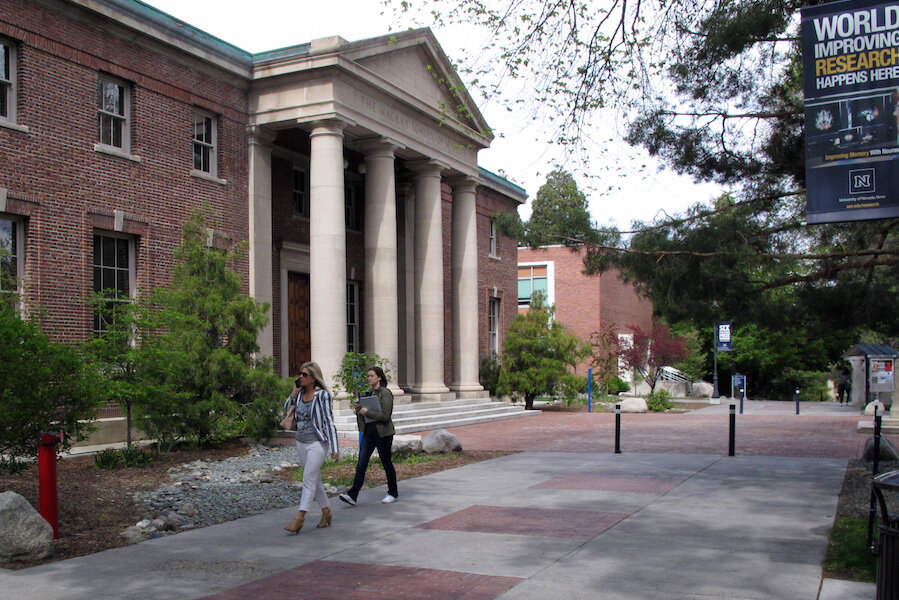Extra years in college come with a six-figure price tag
Loading...
Over 20 million students attend American colleges and universities each year, but a huge swath of students attending four-year institutions will not graduate within that timeframe.
Though an extra year or two as a “super senior” can pass quickly, the financial burden can have long term impacts. In a study out Tuesday, NerdWallet estimated the cost of tuition and loans, income lost, and foregone retirement savings for each extra year of college and found that an extra two years can cost a student up to $300,000 over the course of a lifetime.
"Those who take out student loans will have a much bigger college debt to pay off if they need more than four years to earn a bachelor’s degree," the study reads. "In addition, taking one or two 'victory laps,' as some students jokingly call extra years, can stunt lifelong retirement savings. NerdWallet’s research shows that students who take six years to obtain a bachelor’s degree could miss out on more than $150,000 in retirement savings compounded over 45 years."
Why four years of college can take six
According to the National Center for Education Statistics, 20 percent of college students will take five to six years to graduate. The majority of students need 120 credits to graduate, and doing so "on time" means taking about 15 credits per semester over four years.
But students can be delayed for a variety of reasons, including transferring schools, taking too few credits per semester (also called "underloading"), or simply taking unnecessary credits.
According to Complete College America, 60 percent of students will transfer schools during their college career, many from a community college to a four-year university. Though the student might switch schools, the credits do not always follow. Students lose on average 13 credits when transferring, according to the National Center for Education Statistics, or nearly one semester’s worth of credits.
Another major obstacle is underloading. According to Complete College America, a national nonprofit aimed at increasing the number of Americans with degrees, 70 percent of undergraduates in fall 2012 were taking fewer than 15 credits.
Informing students about the potential costs of not taking 15 credits can be logistically difficult. A report by the National Academic Advising Association states that there is on average one academic adviser for every 367 students. However, some states have created initiatives to encourage students to take at least 15 credits per semester.
What's being done
In 2012, the University of Hawaii helped pioneer the 15 to Finish program, which encourages students to take 15 credits each semester. In the first year, the percentage of students taking 15 credits increased from 15 percent to 24 percent. Since 2012, the percentage of students enrolled in 15 or more credits has increased 20 percent. Other colleges and universities who have implemented the program have seen improvements in the percentage of students taking a full load of classes.
“The first part is telling students what they need to know,” Blake Johnson, a spokesman for CCA, told The Atlantic. “We recognize that not every student can take 15 credits, but we do think there’s utility in telling students what happens if you choose not to.”
The 15 to Finish program can’t guarantee that students won’t take unnecessary credits, and students who have other commitments, such as an off-campus job, may not be able to handle taking 15 credits per semester. “Students will often think more about how much a given semester will cost them in terms of effort and time more so than whether that number of credits will get them to a degree in four years,” says Tod Massa, policy research and data warehousing director for the State Council on Higher Education in Virginia.
But the 15 to Finish program is a start in helping students understand the quickest path to commencement. Today, 35 states have partnered with CCA to continue encouraging students to complete college in a timely manner, including Texas, Oklahoma, Illinois, and Kentucky. Purdue University saw the percentage of students enrolled in 15 or more credits their first semester double from 27 percent in 2012 to 66 percent in 2014.
Nonso Maduka, a student debt expert for NerdWallet, encourages students to take the maximum number of credits you can manage each semester and make sure the credits you take are driving toward the degree you want.
In the end, the best thing to do is make an informed decision. “Education can be a powerful force,” says Maduka, but the important thing is “making the right decision for you, and thinking about the near-term and long-term effects of the decision."








